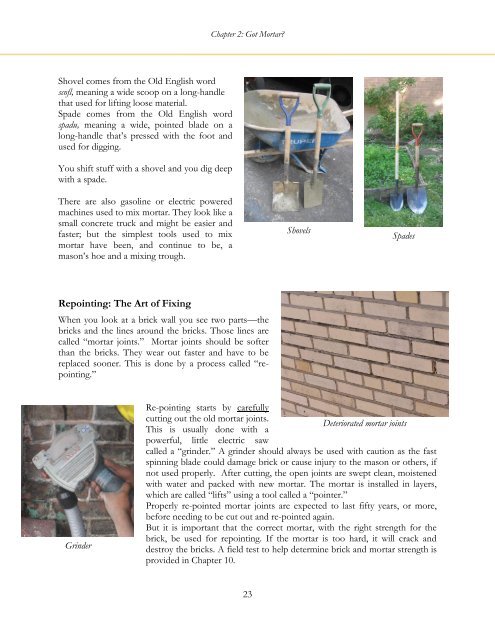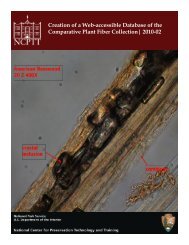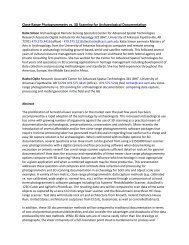Masonry History Integrity - National Center for Preservation ...
Masonry History Integrity - National Center for Preservation ...
Masonry History Integrity - National Center for Preservation ...
You also want an ePaper? Increase the reach of your titles
YUMPU automatically turns print PDFs into web optimized ePapers that Google loves.
Chapter 2: Got Mortar?<br />
Shovel comes from the Old English word<br />
scofl, meaning a wide scoop on a long-handle<br />
that used <strong>for</strong> lifting loose material.<br />
Spade comes from the Old English word<br />
spadu, meaning a wide, pointed blade on a<br />
long-handle that’s pressed with the foot and<br />
used <strong>for</strong> digging.<br />
You shift stuff with a shovel and you dig deep<br />
with a spade.<br />
There are also gasoline or electric powered<br />
machines used to mix mortar. They look like a<br />
small concrete truck and might be easier and<br />
faster; but the simplest tools used to mix<br />
mortar have been, and continue to be, a<br />
mason’s hoe and a mixing trough.<br />
Shovels<br />
Spades<br />
Repointing: The Art of Fixing<br />
When you look at a brick wall you see two parts—the<br />
bricks and the lines around the bricks. Those lines are<br />
called “mortar joints.” Mortar joints should be softer<br />
than the bricks. They wear out faster and have to be<br />
replaced sooner. This is done by a process called “repointing.”<br />
Grinder<br />
Re-pointing starts by carefully<br />
cutting out the old mortar joints.<br />
Deteriorated mortar joints<br />
This is usually done with a<br />
powerful, little electric saw<br />
called a “grinder.” A grinder should always be used with caution as the fast<br />
spinning blade could damage brick or cause injury to the mason or others, if<br />
not used properly. After cutting, the open joints are swept clean, moistened<br />
with water and packed with new mortar. The mortar is installed in layers,<br />
which are called “lifts” using a tool called a “pointer.”<br />
Properly re-pointed mortar joints are expected to last fifty years, or more,<br />
be<strong>for</strong>e needing to be cut out and re-pointed again.<br />
But it is important that the correct mortar, with the right strength <strong>for</strong> the<br />
brick, be used <strong>for</strong> repointing. If the mortar is too hard, it will crack and<br />
destroy the bricks. A field test to help determine brick and mortar strength is<br />
provided in Chapter 10.<br />
23











